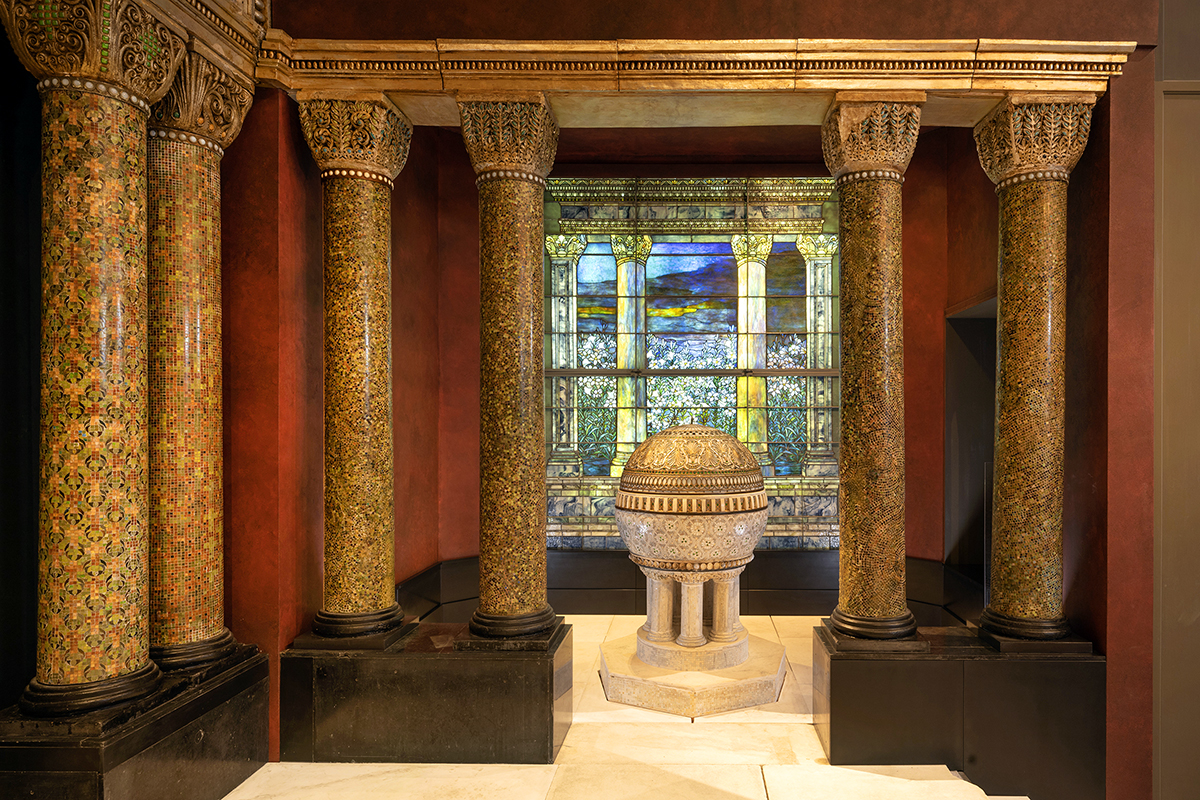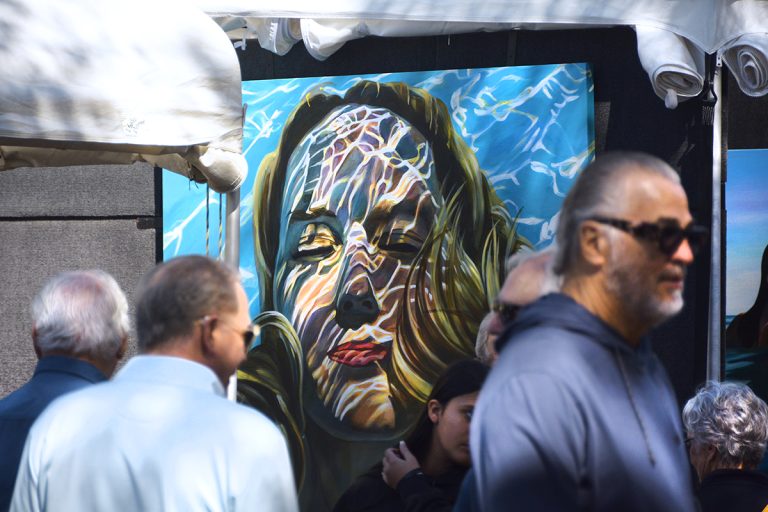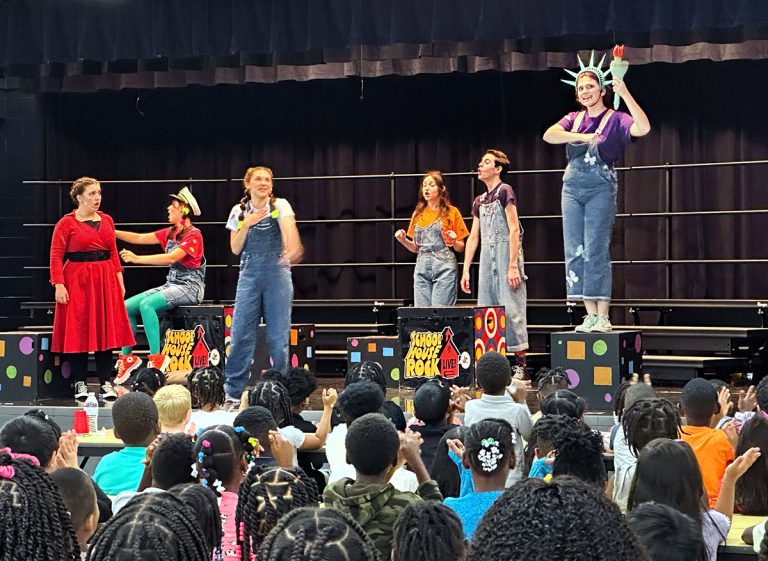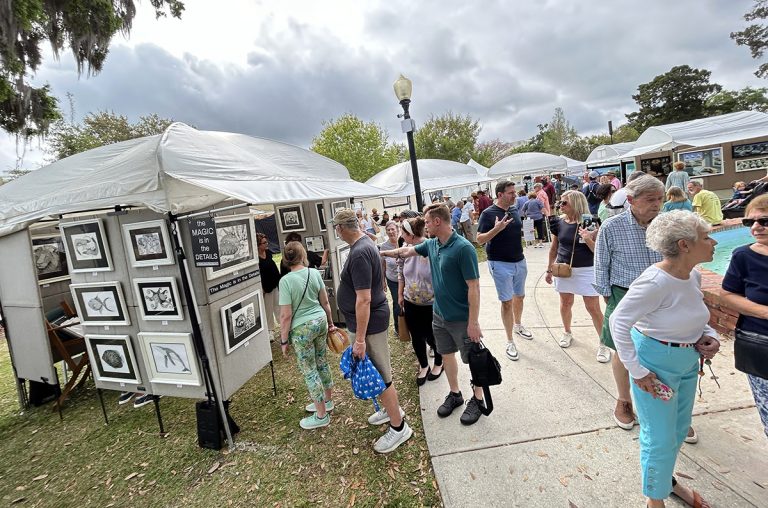The Charles Hosmer Morse Museum of American Art will mark the 25th anniversary of its debut of the Tiffany Chapel during its 2024-25 season, beginning on October 15. Louis Comfort Tiffany’s landmark display will be reunited with his Fathers of the Church mosaic for the first time since its debut, 131 years ago.
Created by the Tiffany Glass and Decorating Company for exhibit at Chicago’s World’s Columbian Exposition in 1893, the chapel’s 1,082-square-foot environment combined reflective mosaic surfaces, stained-glass windows, and detailed furnishings that included six ornate plaster arches, 16 mosaic columns, and a 1,000-pound chandelier in the shape of a cross.
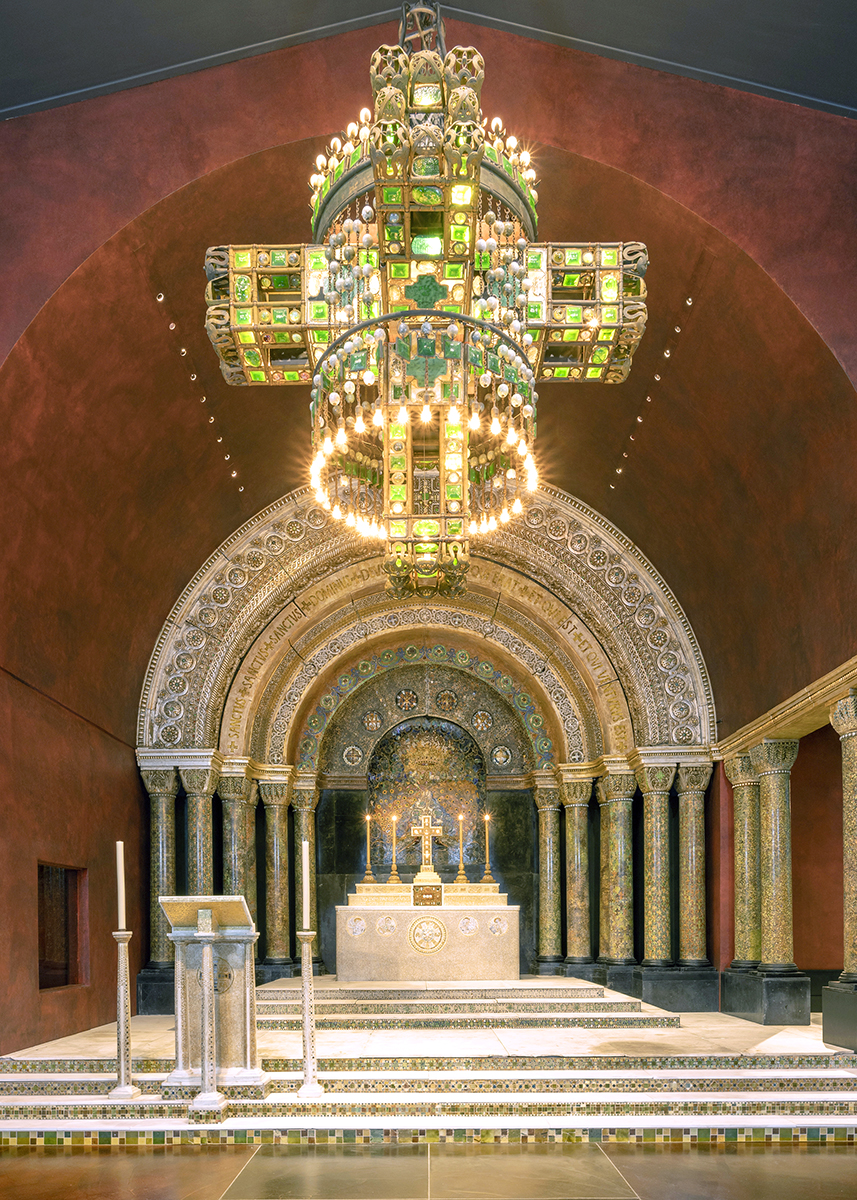
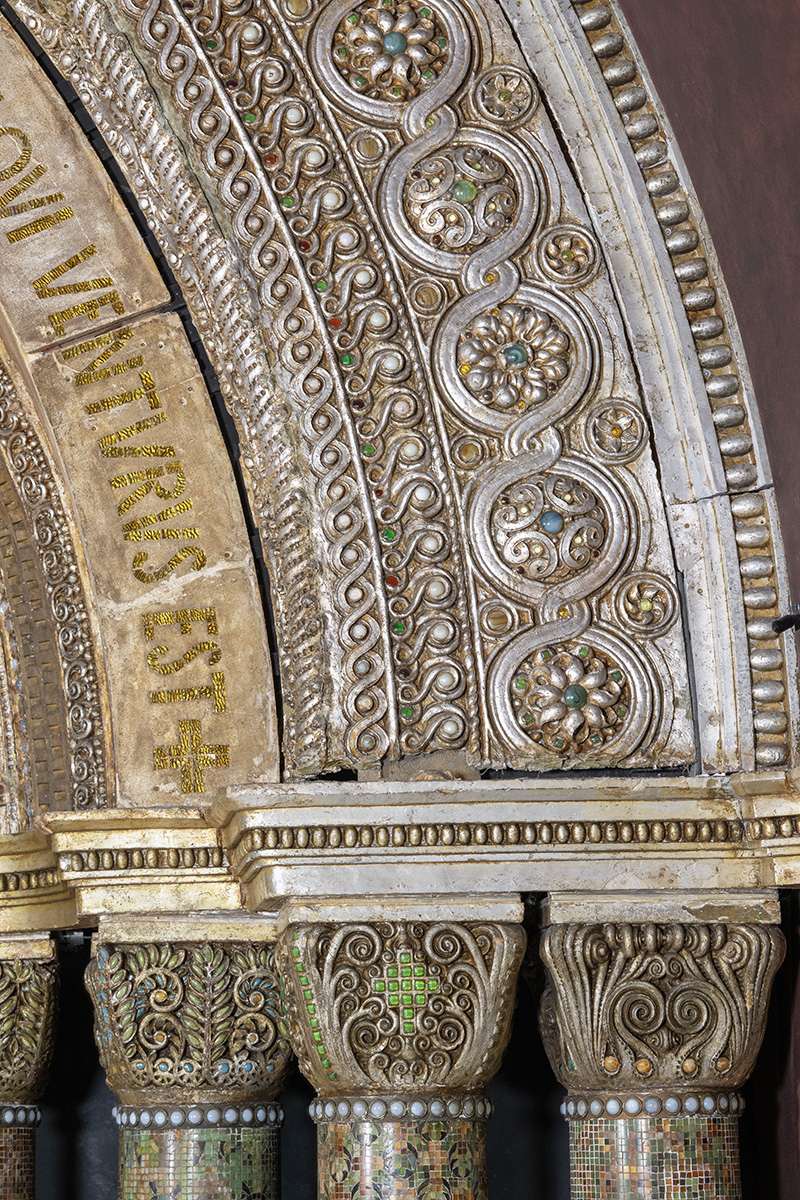
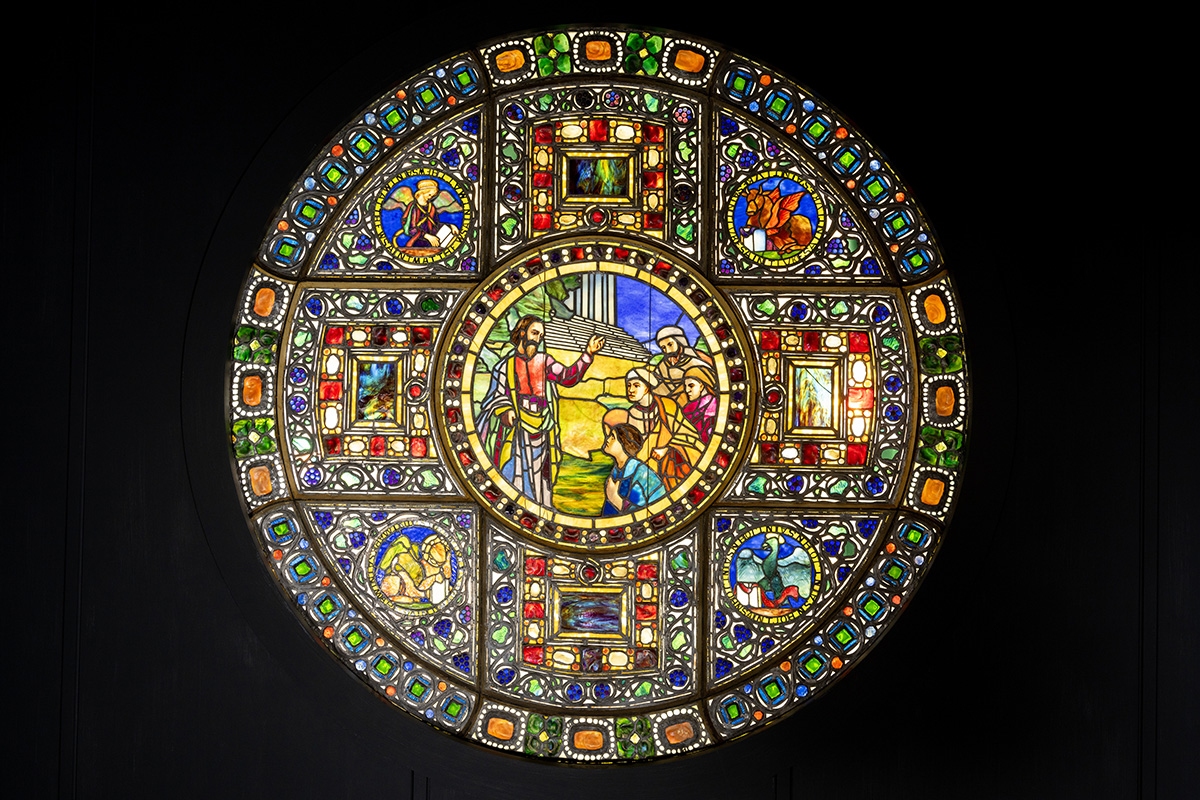
The chapel was purchased in 1898 for display at New York’s Cathedral Church of St. John the Divine, but the display was closed in 1911, leaving it vulnerable to deterioration and water damage. Tiffany later had it removed and repaired for display at his Long Island country estate, Laurelton Hall. After his death, the Tiffany Foundation dismantled the chapel and sold off some of its furnishings. Morse Museum founder Jeannette Genius McKean her husband Hugh F. McKean purchased the remaining chapel components from the Foundation in 1957 and began acquiring the previously sold sections as they became available. The chapel was reassembled at the Morse Museum during a two-year restoration that began in 1996, and opened to the public in 1999.
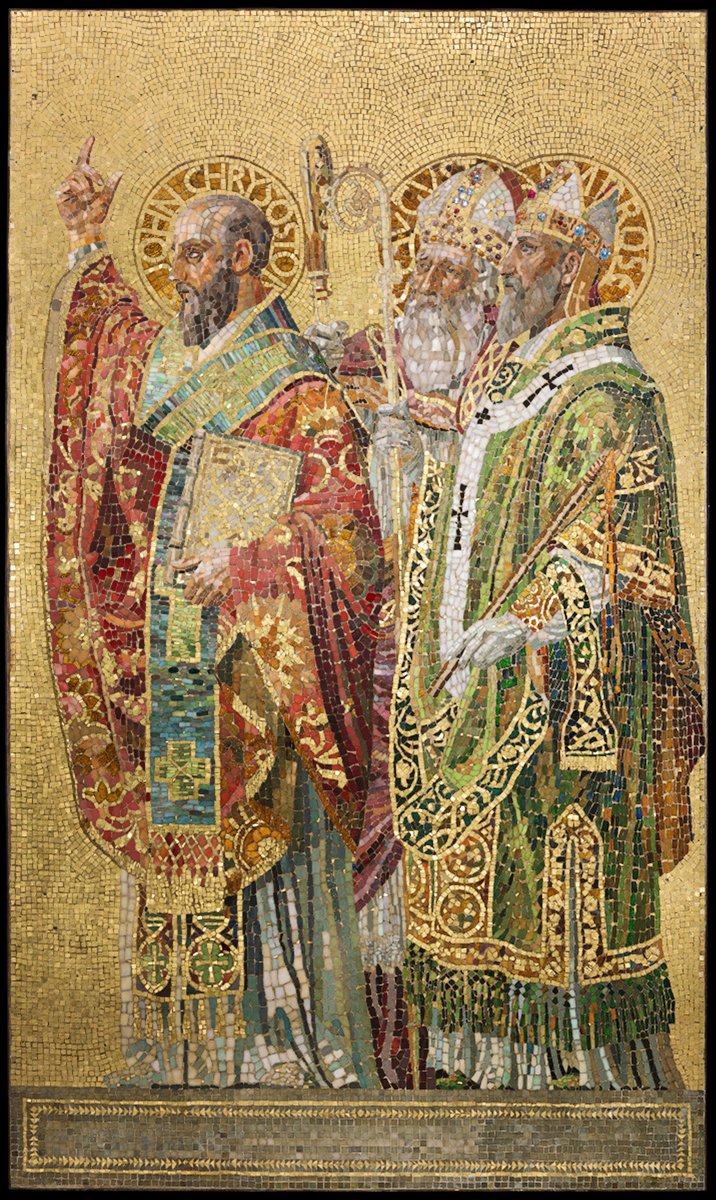
The chapel’s world’s fair exhibition also included Tiffany’s Fathers of the Church mosaic, made by the women’s glass cutting department of the Tiffany Glass and Decorating Company. Thanks to a long-term loan from The Neustadt Collection of Tiffany Glass in Queens, New York, the Morse Museum is displaying the mosaic with the chapel for the first time since 1893. A companion exhibit, “After the Fair,” will tell the story of the chapel’s journey from Chicago to Winter Park.
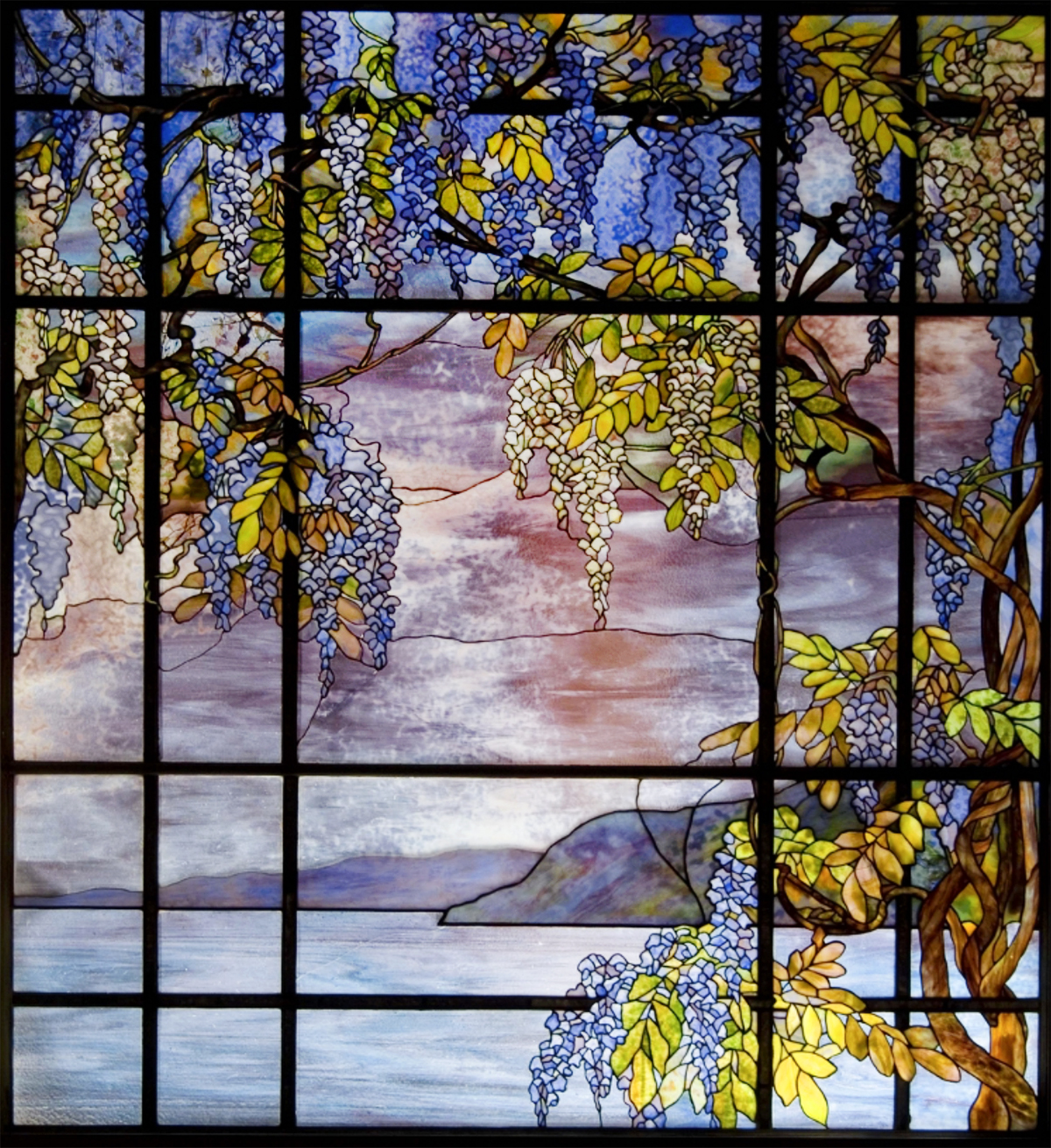
The museum’s 2024–25 schedule also includes the temporary return of the View of Oyster Bay leaded glass window, originally commissioned for the Manhattan home of prominent silk manufacture William C. Skinner. The piece is inspired by a view of the north shore of Long Island where Tiffany’s Laurelton Hall estate was located. The piece has been part of the The Metropolitan Museum of Art collection since 1978 but will be exhibited at the Morse Museum through the summer of 2025 as part of Revival & Reform: Eclecticism in the Nineteenth-Century Environment.
The Morse Museum will continue its holiday tradition with free admission during the Thanksgiving Weekend Celebration, the 46th annual Christmas in the Park on December 5, and a Christmas Eve Celebration. The public can also enjoy free admission during Winter Park’s Arts Weekend, happening February 21-23, 2025, and during the Winter Park Sidewalk Art Festival, Easter Weekend, and Independence Day.
2025 Exhibition Highlights
Arts and Letters, March 4, 2025: Before emails and texts, letters were the primary form of written communication. The exhibition explores the art of letter writing and the ways Americans used the written word for communication and creative expression during the 19th and 20th centuries. The exhibition is made up of archival materials, including paintings like William Paxton’s The Letter, writing instruments, and letters.
World’s Fairs Vignette, March 4, 2025: World’s fairs were an international tradition that celebrated the industrial and cultural achievements of various nations. Throughout the 19th and 20th centuries, visitors were treated art exhibitions and presentations of science, manufacturing, and more. This vignette is inspired by turn-of-the-century world’s fair displays of glass, pottery, and furniture, and world’s fair memorabilia from the Morse Museum collection.
For more information on Morse Museum hours, events and tickets, check the museum website and event calendar or call 407-645-5311.
